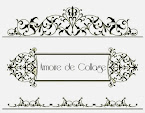It’s logical to assume that porcelain and pottery manufacturers marked their wares to distinguish themselves from their competition; all the better for collectors.
The presence of a mark, whether it be incised or inked under the glaze, drives the value up as the provenance can be validated. Inked marks were usually stamped, but high quality pieces were often handwritten and sometimes bore the signature of the artist as in the case of hand painted Reinhold Schlegilmilch porcelain.
Schlegilmilch porcelain, often referred to as “R.S. Prussia,” is being singled out for its wide variation of marks. This exquisite porcelain was produced by the three sons of Reinhold Schlegilmilch, who all used the father’s initials for their products, with variations in the marks to denote their respective factories. The Schlegelmilch family produced porcelain over years in different regions of Germany, and the region previously known as Prussia. The difference in marks is not an indicator of the quality, but a good way to determine the age of a piece. Renown for perfecting transfers on porcelain, but they also produced beautiful hand painted pieces. These are among the most highly-prized by collectors, but difficult to find. (See photo)
Many changed their marks over the years, even the color of the ink, to denote a new line or generation of products. The exquisite eggshell-like Beleek from Ireland has a history of specific marks and colors throughout its legacy. Savvy Beleek collectors know theses marks and colors, and dealers who choose to sell Beleek, should too.
When fine china dinnerware became affordable for the masses, the French factories producing Limoges porcelain, and Japan’s Noritake, began naming their patterns to the delight of collectors. Every woman wanted a complete set of china in her ‘pattern’ included in the contents of her hope chest. Regretfully many woman tucked their fine china away for fear of damaging what they thought was irreplaceable china, especially if the pattern had been discontinued. Fear no more. The Internet spawned resources to assist with pattern matching. The largest matching service is www.replacements.com who not only match china, but crystal and flatware, including both sterling and silverplate.
Cataloging marks is a monumental undertaking as author, Lois Lehner, realized when she compiled U.S. Marks on Pottery, Porcelain, & Clay. This encyclopedia consists of over 600 pages of marks on just American-made products alone. No doubt that marked pieces command a higher price, but if you learn the nuances of your favorite collectibles, a keen eye will serve you well and you can add to quality pieces to your collection.
Subscribe to:
Post Comments (Atom)




Hi, could you post the source of the page selected above? I have a lesser known mark that I am trying to identify,
ReplyDelete